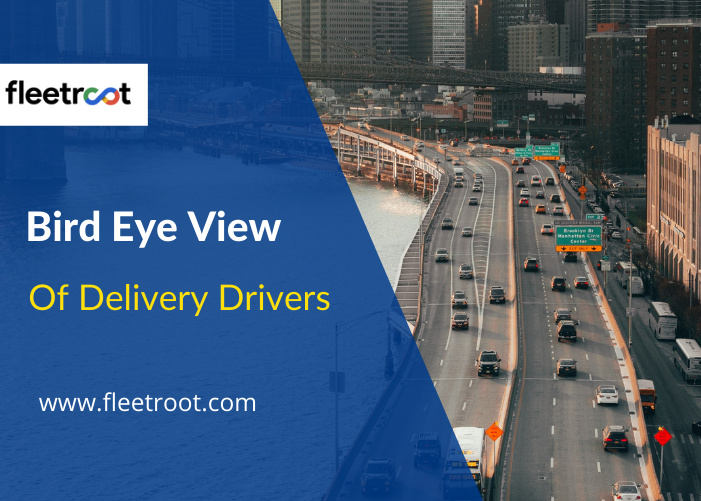Executive Summary
Today’s businesses are complex, intricate mechanisms with countless moving parts spread all across the globe. Right from the procurement of raw materials through to production and delivery, it’s a vast operation!
Among the most complex – and, challenging- of these parts is the final step i.e. the delivery of goods to your customers. Modern Logistics and Distribution Companies are behemoths in their own right and manage an increasingly complex set of dynamic variables including traffic, weather, people, vehicles, cargo, and government regulations (etc.) to successfully deliver goods at customers’ addresses.
Under such circumstances, using a modern, tech-enabled Route Optimization Software to maintain a bird’s-eye view of your delivery process, delivery drivers, and cargo movement is critical-to-success. Without it, it would be impossible to manage such an operation.
Holistic Monitoring of Route Optimization and Delivery Drivers
The delivery process managed by Logistics and Distribution companies has become an increasingly challenging task in modern times. With increasing pressure due to evolving consumer demands, greater competition, and e-Commerce giants offering “24-hr Delivery” and “Next-Day Delivery” options, the traditional methods (using pen, paper, and telephones) are unable to keep up. Also beyond human capabilities is the vast amount of data that needs to be analyzed.
Fleet Managers today use highly advanced cloud-based Route Planning Software that can not only process vast amounts of data but are also embedded with Artificial Intelligence and Machine Learning to help them maintain a bird’s-eye view of the entire delivery process from start-to-finish while managing its delivery drivers, vehicular fleets, and finally, ensuring Customer Satisfaction.
Why Are Traditional Route Planning Methods Insufficient Today?
Given below are problems confronting conventional route planning methods.
- Manually dependent
- Achieving scale is difficult
- Limited data-analytics
- Limited/sporadic communication between Fleet Managers and on-road drivers
- Lack of transparency into fleet operations

What is Delivery Route Optimization?
Delivery Route Optimization is the process by which Logistics and Distribution Companies identify the most efficient route that connects multiple locations. This is arrived upon only after considering all critical variables such as weather conditions, traffic patterns, distances to be covered, type of routes, number of stops per route, details of delivery drivers and vehicles (vehicle type and availability, number of drivers), type of cargo to be delivered, clubbing of similar cargo (etc.)
Remember that the most efficient route isn’t the shortest, cheapest, or the fastest one, but the one that weighs in all factors mentioned above to arrive at the most efficient route.
Top 6 Advantages In Using A Route Optimizer Software
Fleet Managers today use an automated, GPS-enabled Route Optimizer Software to plan, execute and monitor their routes, drivers, and deliveries to achieve maximum productivity.
1) Automation: Modern routing software is empowered with tools like automation, Artificial Intelligence, Machine learning, geofencing tools, massive data-crunching capabilities, and predictive visibility in real-time. It brings all stakeholders onto a common cloud-based platform and uses all the above to calculate the most efficient routes for delivery. This translates into efficient planning and handling of on-ground cargo movement. Ultimately, this minimizes the cost of operations and maximizes efficiency at all times.
Again, remember that the most efficient route isn’t the shortest one, or the cheapest one, or the fastest one – it is the one that balances all variables to come up with the best one.
Dynamic Re-Routing: As mentioned above, the Logistics and Distribution world is intrinsically dependent on ever-changing dynamic variables (e.g. a sudden storm that disrupts a highway route). An automated delivery route planner can constantly evaluate these changing variables to immediately re-route paths.
2) Live Tracking: A great benefit of automated delivery software is its real-time tracking. This allows Fleet Managers to constantly monitor the execution of deliveries in real-time and make changes as needed. For example, re-routing a delivery due to a traffic jam on a route. Since they are connected with the drivers in real-time such course corrections are possible. Ultimately, this helps in saving time, fuel, and costs.

3) Downloadable App: As mentioned above, the app (which can be downloaded by the drivers on their phones) is the final piece of a delivery route planner app. This allows Fleet Managers to stay connected with their drivers and field workers thereby improving monitoring, productivity, real-time changes, and crisis management. Over a period of time, this generates deep insights into Planned Performance vs. Actual Performance.
4) Increased Transparency: Modern delivery software analyzes real-time data from various sources and tools such as GPS, data analytics, and telematics via an elaborate network of cloud servers and satellite towers.
This circumvents one of the biggest problems of traditional delivery management i.e. lack of visibility and transparency in the delivery process. Now, the Fleet Managers can monitor the movement of the driver, vehicle, and cargo in real-time on live maps at their control stations via a constant two-way exchange of communication. This also helps in making course corrections. All this provides the necessary visibility into the delivery process from start to finish.
5) Optimize Last-Mile Delivery: It is common knowledge that last-mile delivery logistics is the most challenging in the delivery business and has the most cost implications.
Traffic congestions, no-entry zones, customer delivery windows, constant re-routing needs, vehicle breakdowns (etc.) are all real and dynamic factors that keep adding up through the entire process of daily deliveries to ultimately collect at the last mile. Therefore, using automated Last-Mile Delivery software that balances out these ever-changing dynamics in real-time is of utmost importance. Simply explained, you would not be able to manage a delivery operation in today’s world without it!
6) e-POD: Collecting paper-based delivery confirmations is a thing of the past. Nowadays, the route planning software has an inbuilt e-POD (Electronic Proof of Delivery) that uses e-signatures and photos for delivery confirmation, thus making things faster and more convenient.
Customer Satisfaction – The Final Metric.
A route-planning software constantly balances out all the variables to come up with the most efficient and cost-effective routes. This provides Fleet Managers with the requisite visibility and transparency throughout the delivery process and helps them clearly inform their customers about their package delivery times so that they can plan accordingly.
Even when there are deviations from the projected timelines, the planning software and the Fleet Managers can quickly assess the changes and re-route accordingly to arrive at the next best solution – and, communicate it to their customers in real-time e.g. SMS with live links with the changes and updates.
Ultimately, a business is dependent on its customers and unless you can keep them happy and satisfied, they will not turn into “repeat customers’, thus affecting your ability to build a stable, profitable business.
Conclusion: As mentioned above, using Best Last Mile Delivery Management Software enables you to optimize routes and manage your delivery drivers, thus helping you to maintain an overall perspective of your delivery operations.




